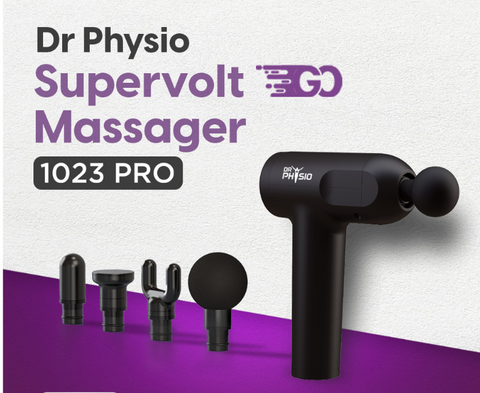Pain in the neck, upper back, or into the shoulders often associated with “tech neck” a condition caused by prolonged use of electronic devices. This condition leads to stiffness, soreness or intense body pain.
Our increasingly sedentary lifestyle and reliance on technology have contributed to a number of health issues which have negative effects on our physical as well as mental health, depending on how it is used. Prolonged sitting in front of a computer or mobile device can lead to poor posture, eye strain, and back pain. This can lead to "Tech neck" a new carpal tunnel syndrome that can cause headache, neck and shoulder pain etc.
What is Tech Neck / Text Neck?
Many of us spend long hours sitting at a desk or hunched over a device, which puts a strain on our neck muscles and spine. "Tech neck" is a relatively new term used to describe a condition caused by prolonged use of electronic devices which can lead to pain and stiffness in the neck, shoulders, and upper back. Tech neck, also known as text neck or tech neck syndrome.
It is overuse syndrome, usually resulting from excessive strain on the neck from spending too much time watching down at any handheld mobile device or looking at a computer screen in forward head posture (FHP), out of neutral alignment with their spine. This can lead to neck pain, headaches, shoulder and arm pain, and breathing compromise.”
Stacie J. Stephenson, the Chair of Functional Medicine at Cancer Treatment Centers of America.
Common Symptoms
The following are some common symptoms associated with tech neck:
Neck Pain
One of the most common symptoms of tech neck is neck pain, which can range from mild to severe. The pain is often felt in the neck and upper back and can be exacerbated by movements such as turning the head or looking up.
Headaches
Tech neck can also cause headaches, which may be felt at the base of the skull or around the temples. These headaches can be persistent and may be accompanied by other symptoms such as dizziness or nausea.
Shoulder Pain
Tech neck can cause pain in the shoulders, which may be felt as a dull ache or sharp pain. The pain can also radiate down the arms and into the hands.
Stiffness
Tech neck can cause stiffness in the neck and upper back, making it difficult to move the head and shoulders.
Tingling or Numbness
In some cases, tech neck can cause tingling or numbness in the arms and hands. This is caused by pressure on the nerves in the neck and can be a sign of a more serious condition.
Tips for Getting Rid of Tech Neck
If you experience any of above explained symptoms, it's important to seek medical advice. Your doctor will recommend lifestyle changes, physical therapy, or other treatments to help alleviate your symptoms and prevent further damage. Here are some tips to prevent tech neck syndrome:
Maintain Proper Posture
One of the major causes of tech neck syndrome is poor posture while using electronic devices. You can also consider using posture corrector that works by pulling back your shoulders and aligning spine into its position.
Want to fix bad posture? Buy Dr Physio Advanced posture corrector which is designed for men and women and the best option for correcting your posture.
Dr Physio Posture corrector comes with adjustable straps that allow you to customize the level of support as per your comfort.
Take Frequent Breaks
Taking frequent breaks from electronic devices can help prevent tech neck syndrome. Try to take a break every 20-30 minutes and stretch your neck and shoulders. Get up and start moving around your workstation.
Use Ergonomic Equipment
Make sure to keep your head and neck in a neutral position and avoid hunching over your device. Ergonomic equipment such as an adjustable desk or ergonomic chair can help maintain proper posture while using electronic devices. Using a coccyx pillow can also help relieve this pain. It help you sit comfortably in correct position for long periods.
Dr Physio’s coccyx pillow is the best coccyx cushion designed to transform your sitting with comfort.
Exercise Regularly
Incorporating regular exercise and strengthening activities into your routine can also help improve your posture. It can help strengthen your neck and shoulder muscles can prevent tech neck syndrome.
Adjust Your Screen
Adjust your screen to eye level to avoid tilting your head down or up for prolonged periods, which can cause neck strain. Your spine should be straight from head to tailbone.
Stretching & Strengthening Exercises
Do some stretches for the neck and shoulders regularly to help prevent muscle tension and stiffness. For example, you can start doing chin tuck at your desk while working or in attending a meeting at work.
Massage
Consider getting a massage to alleviate tension in the neck and shoulders. Generally, you should start by applying the electric massager to the affected area using light pressure and gradually increasing the intensity as your muscles become accustomed to the vibrations or percussive movements.
Dr Physio’s electric massagers can help you relieve soreness and muscle tension. They use vibrations or percussive movements to stimulate the muscles and increase blood flow to the affected areas. This increased blood flow can help reduce muscle tension, alleviate soreness, and improve overall muscle function.















